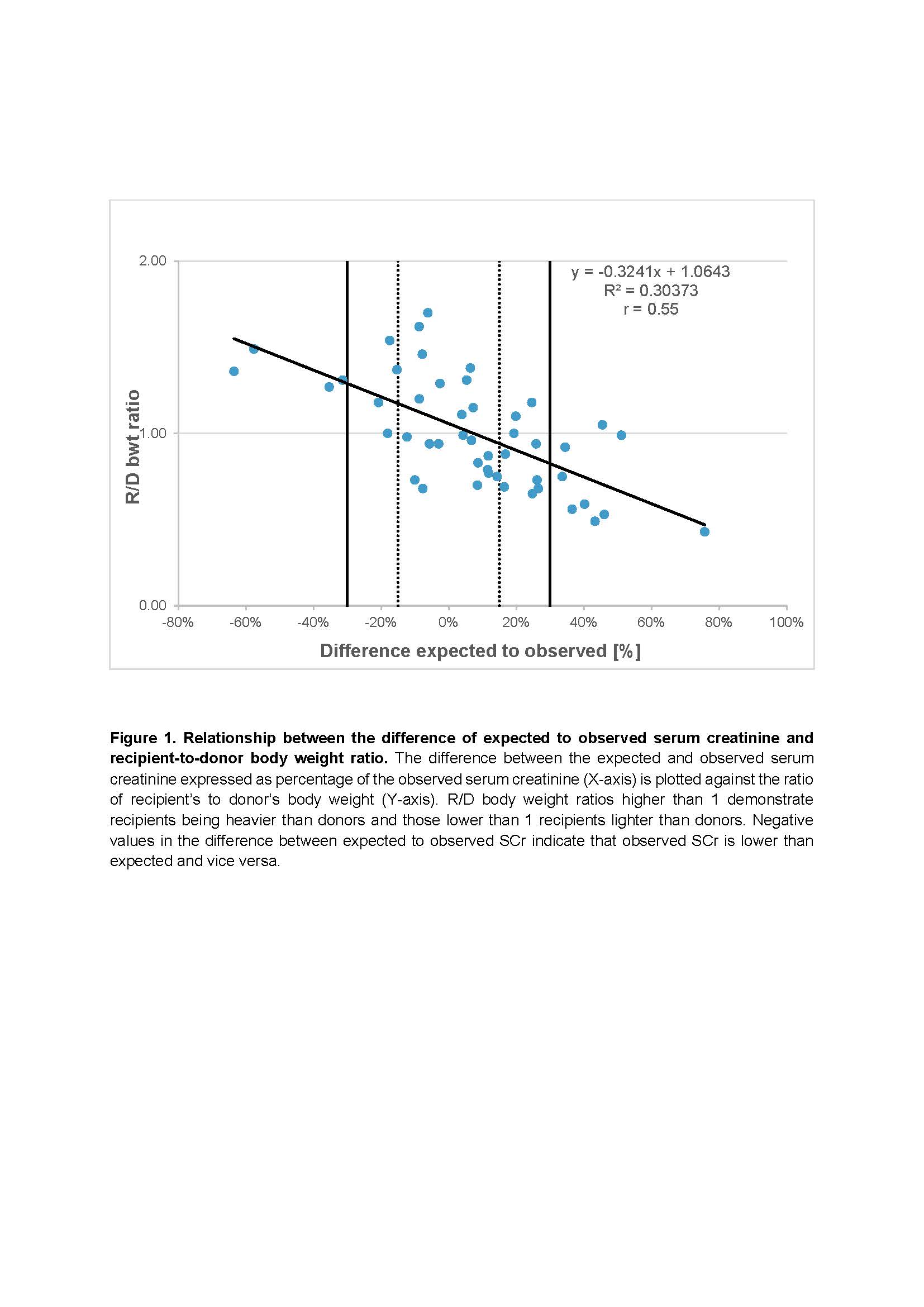The Effect of Donor-Recipient Weight Mismatch on Kidney Graft Function – Demand Defines Supply
Laura Hapuoja1, Andreja Figurek1, Valerie Luyckx1, Thomas Mueller1.
1Division of Nephrology , University Hospital Zurich, Zurich, Switzerland
Introduction: In kidney transplantation, graft function and survival is dependent on immunological and non-immunological factors. A metabolic mismatch between nephron supply and recipient demand may influence the degree of hemodynamic changes induced in the graft. Transplantation of a small kidney into a large recipient with a higher metabolic need might lead to compensatory hyperfiltration with possible accelerated loss in graft function over the very long-term. Based on the correlation between kidney size and body weight, we have analyzed the effect of recipient-to-donor body weight ratio on function of the transplanted organ in the recipient.
Materials and Methods: Parameters determining kidney function pre- and post-transplantation were analyzed one year before and one year after transplantation in 68 living donors and 48 of their recipients. Predicted values of kidney function in both, donors and recipients, were assessed according to the formula published by our group (Al-Sehli et al, 2015). The importance of the recipient-to-donor body weight ratio on the predicted graft function was evaluated.
Results: Donors’ kidney function showed an adaptive increase of the remnant kidney of 33 ± 15% (r=0.9, p<0.001). Small kidneys transplanted into a large recipient showed an additional increase in filtration, whereas larger kidneys given to a small recipient filtered less than expected. The difference between the body weight of living donors and their recipients significantly influenced the prediction of the recipient’s kidney function (r=0.55, p<0.001), as depicted in Figure 1. In a linear regression analysis, the correlation coefficient r was 0.6 (p <0.5).

Discussion: In recipients with less body weight than donors, observed post-transplant serum creatinine was higher than expected, indicating a lower filtration of the transplanted kidney and, conversely, kidney function in recipients heavier than their donors pointed to a higher post-transplant filtration. This change in filtration rate occurs already in the first weeks after transplantation. Although favorable at the beginning, compensatory hyperfiltration might harm the graft outcome.
Conclusion: Transplanted kidneys adapt to the recipient’s metabolic needs by increasing or decreasing the filtration rate, indicating that demand determines the supply. However, long-term studies in kidney recipients concerning the impact of recipient-to-donor body weight ratio differences need to be performed in order to confirm whether hyperfiltration is permanently maintained, and as such, might lead to a declining kidney function in metabolically mismatched kidney grafts in the very long-term.
Keywords: living donor, kidney recipient, kidney transplantation, body weight, kidney graft function.
NCCR Kidney funded by the Swiss National Science Foundation..
